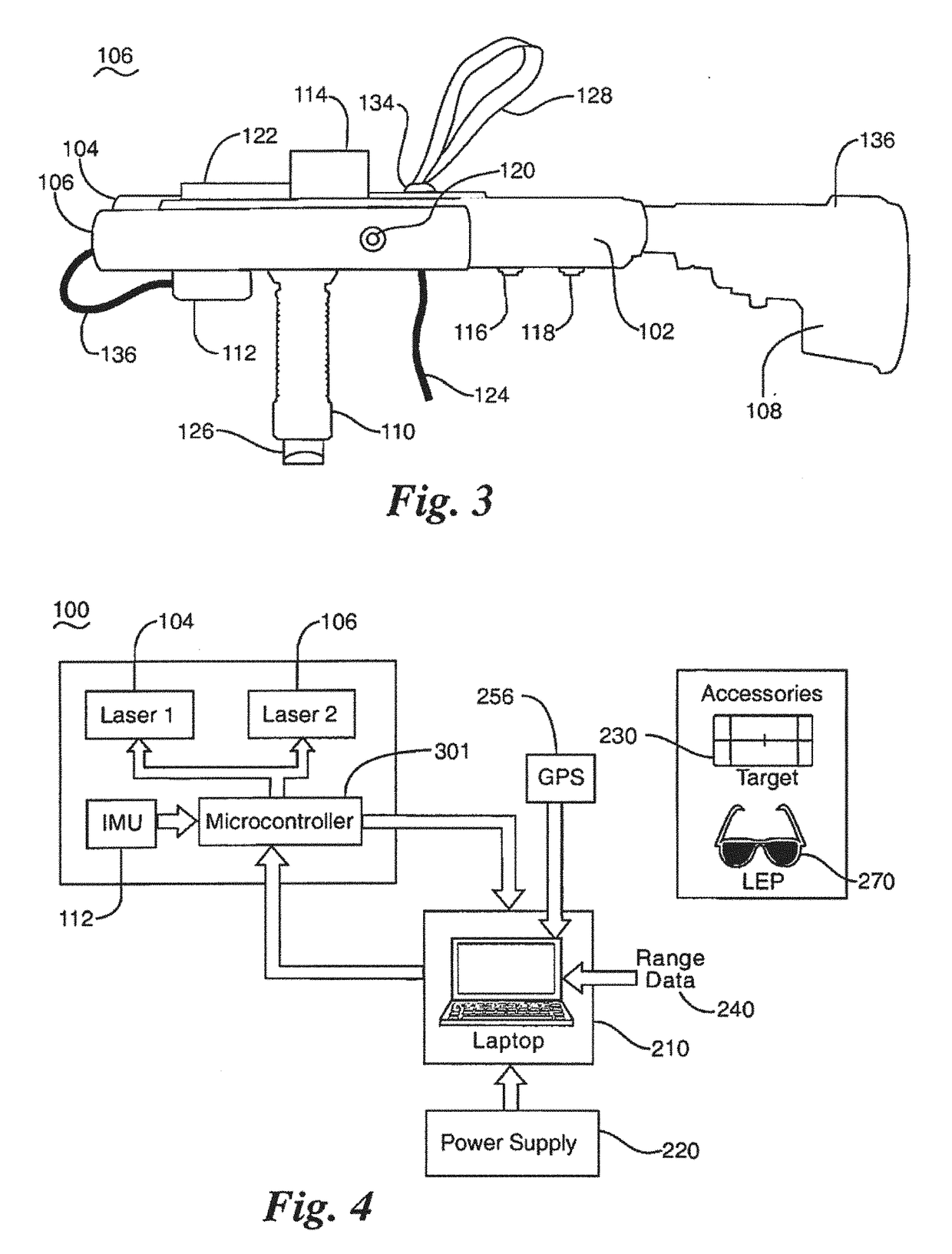Laser Sensor Stimulator
a stimulator and laser sensor technology, applied in the direction of distance measurement, instruments, lighting support devices, etc., can solve the problems of low validation and direct illumination during flight, large laboratory and ground characterization and testing, and inability to accurately detect the position of the laser sensor, etc., to achieve the effect of reducing the risk of laser damag
- Summary
- Abstract
- Description
- Claims
- Application Information
AI Technical Summary
Benefits of technology
Problems solved by technology
Method used
Image
Examples
Embodiment Construction
[0018]As disclosed herein, a laser sensor stimulator 100 includes a housing 102, laser units 104, 106, a rifle stock 108, a tactical foregrip 110, an inertial measurement unit 112, a sight 114, laser switches 116, 118, auxiliary switches 120, and a control unit 122. An umbilical cable 124 connects the laser sensor stimulator 100 to a laser sensor stimulator system described below. The housing 102 is a generally longitudinal shell that provides a platform for mounting the other components of the stimulator 100. The laser units 104, 106 are attached to the housing 102 with one laser unit 104, 106 positioned on each side of the housing 102 with the longitudinal axis of each laser unit 104, 106 aligned with the longitudinal axis of the housing 102. The laser units 104, 106 are connected to the housing 102 via quick-release mounts (not shown) to permit rapid assembly and disassembly of the stimulator 100 and easy exchange of different laser units. The laser units 104, 106 may be any port...
PUM
 Login to View More
Login to View More Abstract
Description
Claims
Application Information
 Login to View More
Login to View More - R&D
- Intellectual Property
- Life Sciences
- Materials
- Tech Scout
- Unparalleled Data Quality
- Higher Quality Content
- 60% Fewer Hallucinations
Browse by: Latest US Patents, China's latest patents, Technical Efficacy Thesaurus, Application Domain, Technology Topic, Popular Technical Reports.
© 2025 PatSnap. All rights reserved.Legal|Privacy policy|Modern Slavery Act Transparency Statement|Sitemap|About US| Contact US: help@patsnap.com



